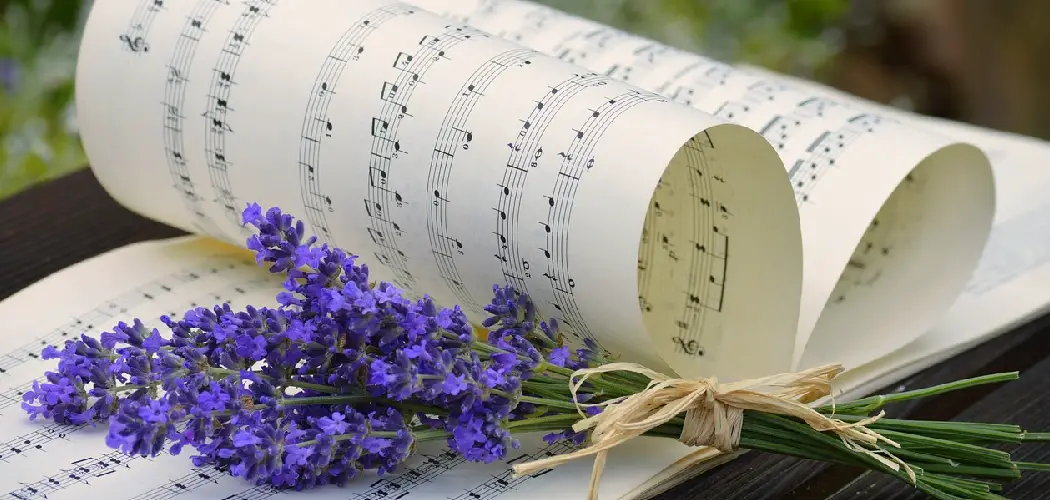Are you looking for an easy way to make your home more inviting and pleasant? Why not start by adding a touch of beautiful fragrance with some homemade paper lavender?
This easy craft project is perfect for kids to take part in, as well as adults who love the unique aroma that comes from natural fresh flowers. With just a few materials and about 20 minutes, you can create beautiful handmade lavender decorations to be used in any number of creative ways, such as adorning greeting cards or simply pinning them up on the wall.
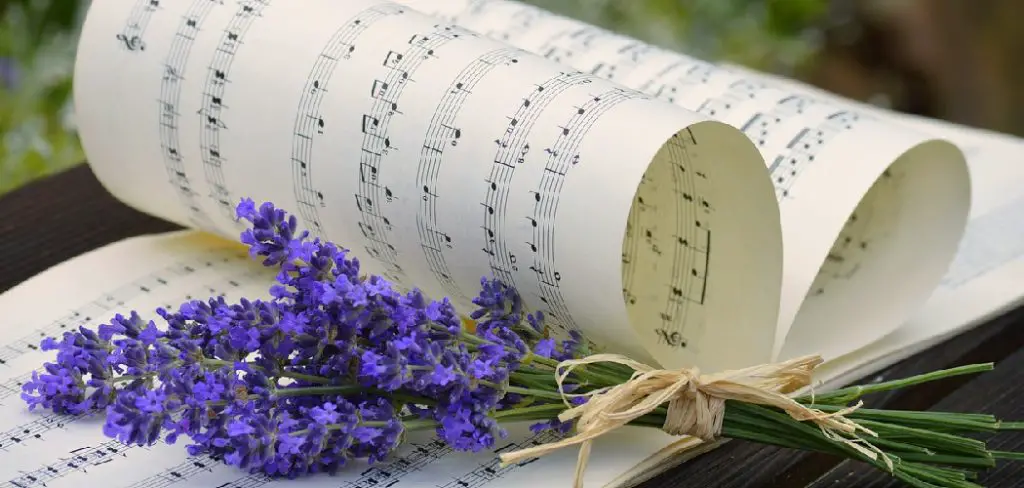
In this post, we’ll cover all the basics of creating beautiful homemade paper lavender decorations—from gathering the best materials to assembling and finishing touches. Read on for all the tips you need to know about how to make paper lavender!
What Will You Need?
To make paper lavender decorations, you’ll need the following materials:
Lavender flowers (fresh or dried)
Paper of your choice (plain white printer paper is a good option)
Scissors
Glue stick or craft glue
Optional but helpful—a thin paintbrush for dabbing glue
Once you have all the materials ready, it’s time to start putting together your paper lavender decorations!
10 Easy Steps on How to Make Paper Lavender:
Step 1. Cut the Paper Into Small Pieces:
Cut the paper into small pieces of different shapes and sizes. Making at least four or five different shapes is a good idea. As you cut, try to make each piece as thin and light as possible. This will help the lavender look more natural and delicate. You can also use patterned scrapbook paper or tissue paper to add more texture and dimension to your paper lavender decorations. The more variety in the shapes and sizes of paper, the better!
Step 2. Cut the Lavender Flowers:
Cut or tear the fresh lavender flowers into small pieces. You can also use dried lavender for this step. Make sure to cut or tear them into small enough pieces so they can be easily glued onto the paper. It’s important to use fresh or dried lavender as they give off a beautiful scent that will make your paper lavender decorations smell just like the real thing! You can also add a drop of lavender essential oil to the final product for an extra boost of fragrance.
Step 3. Arrange the Paper and Flowers:
Arrange the paper pieces and flowers on a flat surface. Experiment with different placements until you find an aesthetically pleasing pattern. If you’re using dried lavender, make sure to press the flowers firmly onto the paper. This will help the flowers stick better to the paper. If you’re using fresh lavender, be gentle when pressing onto the paper so as not to crush or damage the delicate flowers.
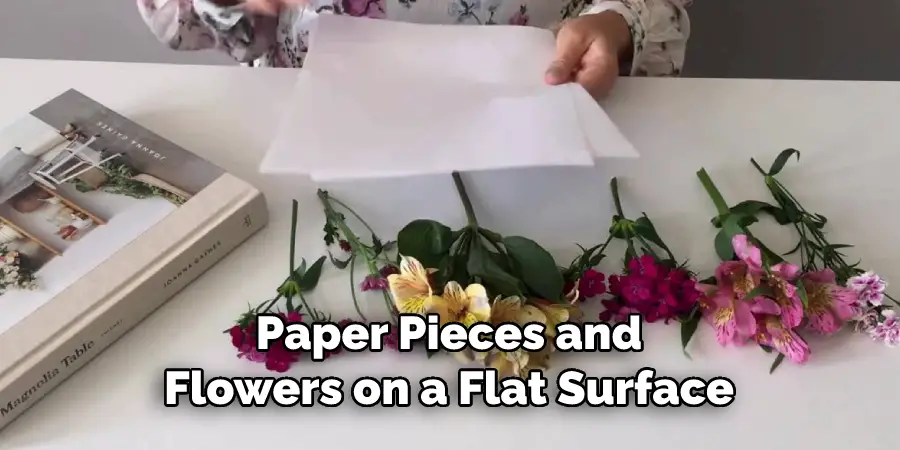
Step 4. Glue the Paper and Flowers Together:
Once you are happy with the placement, start to glue the paper pieces and flowers together by dabbing a small amount of glue onto each piece of paper or flower petal. You can also use a thin paintbrush for this step to ensure an even application of glue. Additionally, make sure to press the paper pieces and flowers firmly together to ensure a strong bond. Continue this process until all the paper pieces and flowers are glued together.
Step 5. Allow Time for Drying:
Allow your paper lavender decorations to dry for at least 20 minutes before handling them again. This will help ensure that all the pieces stay in place once they have been glued together. Be careful not to move them around too much during this process. You can also place a heavy book on top of the decorations to help keep them in place while they dry. It’s important to allow enough time for the glue to set so that your paper lavender decorations are strong and sturdy.
Step 6. Cut Out Leaves (if desired):
If you wish, cut out some leaves from green paper and glue them onto your paper lavender decorations. You can also use dried or fresh lavender leaves. Ensure that you press them firmly into place. Add as many or as few leaves as you like to give your paper lavender decorations a more realistic look.
Step 7. Hang or Pin the Decorations:
Once your paper lavender decorations have been dried, you can either hang them up or pin them to the wall. They make great decorations for greeting cards, scrapbooks, and other craft projects. Don’t forget to use a bit of glue on the back of each decoration so that they stay in place. You can also use colorful ribbon or string to hang your paper lavender decorations. It’s all up to your own creativity and preference!
Step 8. Enjoy Your Handmade Decorations:
The end result is a beautiful set of handmade paper lavender decorations that are perfect for adding a touch of freshness to any room! Always make sure to keep them away from direct sunlight and moisture. As an added bonus, the aroma of the lavender will linger in the air for days! You can also gift these decorations to family and friends or use them for a special occasion such as a wedding or birthday party.
Step 9. Store in an Air-Tight Container:
Keep your paper lavender decorations stored in an air-tight container away from direct sunlight and humidity to ensure that they last longer. It’s also important to note that if you use fresh flowers as part of your decoration, it might only last about two weeks before beginning to fade. You can, however, extend the life of your decorations by storing them in the refrigerator. Just make sure to use a sealed container or plastic bag to prevent any moisture from getting in.
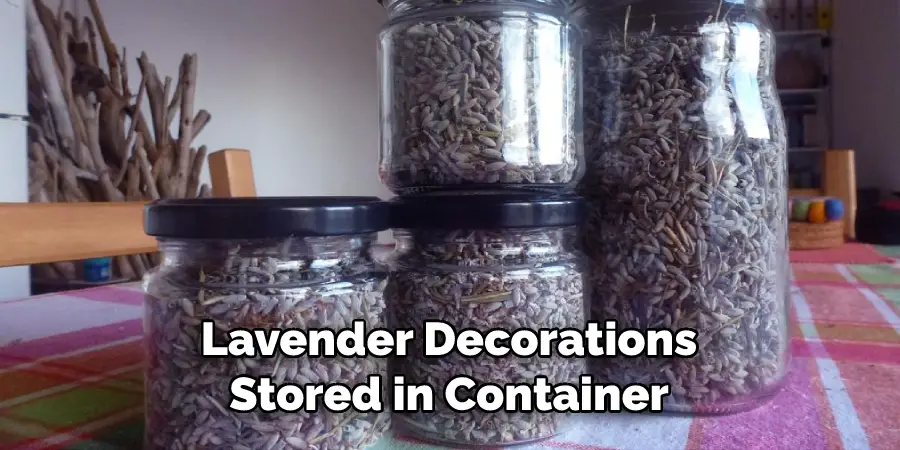
Step 10. Reuse Materials:
Once you have finished with your paper lavender decorations, don’t forget to recycle the materials. This includes both the paper and any fresh or dried flowers that were used in the project. Reusing these materials will help reduce waste and keep them out of landfills. Plus, it’s always great to be able to create something beautiful while also being environmentally friendly! So go ahead and get creative with your paper lavender decorations.
Creating beautiful homemade paper lavender decorations is a fun and creative way to spruce up any room! With this post, we hope you know how to make paper lavender decorations easily. So go ahead—start gathering supplies and get crafting!
5 Additional Tips and Tricks:
1. To get the most out of your paper lavender, you should dry it as quickly as possible. This will help to preserve its scent and color for longer. Place the freshly cut stems in a warm, dry, and well-ventilated area.
2. To create a more striking color for your paper lavender, add a few drops of food coloring to the wet paste before you start pressing the petals.
3. When adding pigment to the petals, it’s best to use powdered pigments rather than liquid, as they will be easier to distribute evenly throughout the paper lavender.
4. If you want your paper lavender to last longer, try spraying them with acrylic sealant or hairspray once they have dried completely. This will help keep them looking fresh and vibrant for much longer.
5. To give your paper lavender a unique look, try using other materials, such as ribbon or string, to bind the petals together. This will add an extra layer of detail and interest to your creation.
With these tips in mind, you can create beautiful paper lavender that will last for years! Have fun experimenting with different colors and design combinations to find the perfect one for your home.
5 Ways to Make Your Project Easy:
1. Start by gathering the materials you need, such as dried lavender, scissors, glue, and paper bags.
2. Cut off any excess stems from the lavender to make it easier to press into the paper.
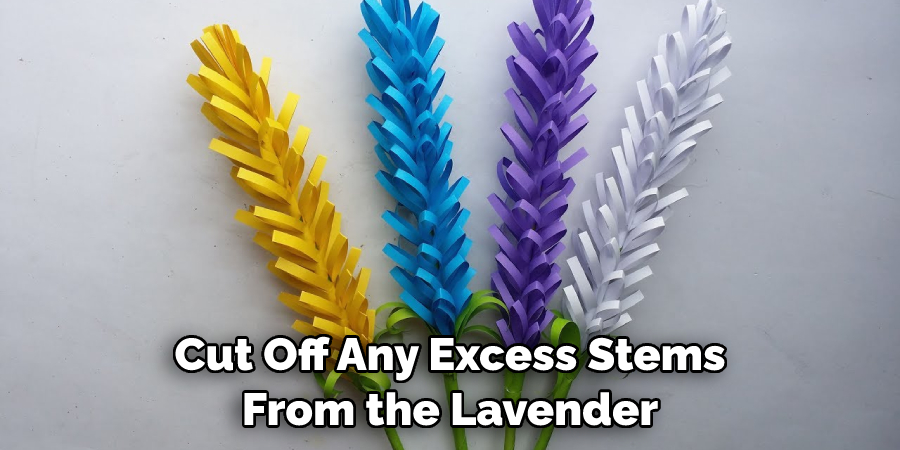
3. Place a piece of waxed paper on top of a paper bag before pressing the petals onto the surface. This will create an easy-to-remove backing for your project once it’s finished.
4. Mix some drops of food colouring with water in a small bowl and add this mixture to the glue before applying it to the petals. This will help increase vibrancy and ensure even coverage throughout your project.
5. Finally, use an oven or microwave to dry out your project in order to ensure a longer-lasting finish. Allow it to cool before using any sealant or hairspray for extra longevity.
Following these steps will make creating paper lavender easy and fun! With some patience and creativity, you can have beautiful projects that look just like the real thing. Enjoy experimenting with different colors and textures to create something unique and special.
5 Things You Should Avoid:
1. Don’t use fresh lavender: Fresh lavender will take much longer to press and may not retain its color or scent as well.
2. Avoid using too much glue: Too much glue can cause the petals to lose their shape and texture, making it difficult to create a neat paper lavender project.
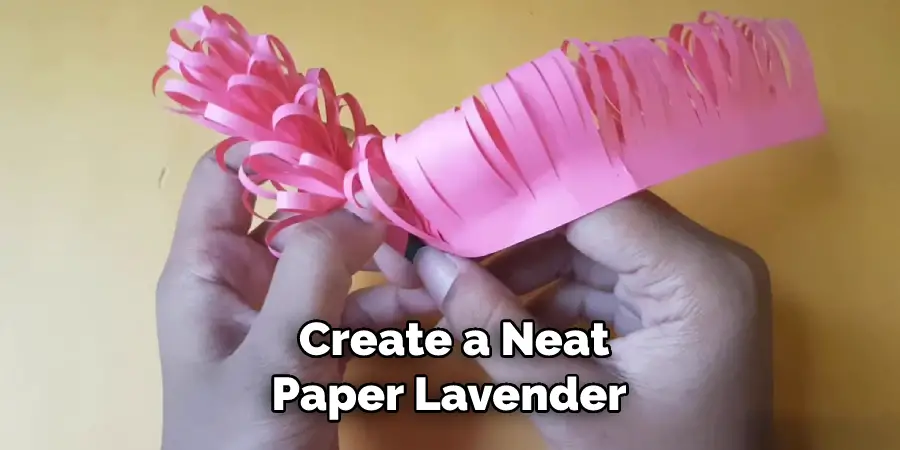
3. Don’t overlook the importance of ventilation: Drying your paper lavender in an area with poor air circulation can make it take longer to dry and could also lead to mold growth.
4. Try not to forget about the sealant: Applying a sealant or hairspray on top of your dried paper lavender project is important in order to keep it looking fresh for longer.
5. Don’t be afraid to experiment: Try experimenting with different color and texture combinations to get the best results. This could lead to some amazing and unique creations that you never expected!
By following these simple tips, you can ensure your paper lavender project looks and smells great for years to come! With a little practice and patience, you’ll have beautiful projects that will make any room feel more special. Enjoy creating something truly one-of-a-kind!
5 Different Types of Paper Lavender:
1. Glitter paper lavender: Create a more glamorous look by adding tiny pieces of glitter to your paste before pressing the petals onto the paper bag. This will give your project a beautiful shimmer and shine that can’t be achieved with regular glue or coloring techniques.
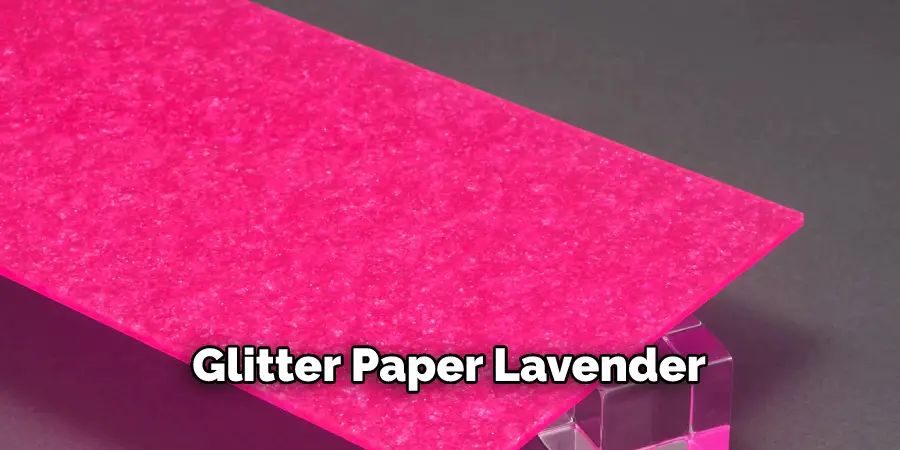
2. Dyed paper lavender: Using food coloring or other pigments, you can dye the petals of your paper lavender to create unique colors and shades that would otherwise be difficult to achieve. This is perfect for creating vibrant projects with lots of personalities!
3. Metallic paper lavender: Adding metallic powder to your glue will give your project an edgy yet elegant look that won’t fade or chip over time. You can also use metallic paper to create a more intricate design that will last for years.
4. Flat paper lavender: If you want a simpler look, you can simply press the petals onto the paper bag and skip the glue altogether. This is perfect for those who want a quick and easy project with minimal mess!
5. 3D paper lavender: For extra creativity, try creating 3D shapes with your project by adding different layers on top of each other before pressing them down onto the paper bag. This will add an extra layer of dimension and interest to your finished creation!
Creating beautiful paper lavender doesn’t have to be complicated or time-consuming. With the right materials and a little creativity, you can make something unique that you’ll be proud to display in your home! Have fun experimenting with different looks and colors to create one-of-a-kind projects that will last for years.
What Kind of Paper is Best for Making Paper Lavender?
The best type of paper to use for creating paper lavender is a heavy-weight, acid-free card stock. This type of paper will hold up better than regular paper and won’t turn yellow or fade over time. It also has a smoother finish, making it easier to press the petals onto the paper and create a neat, professional-looking project.
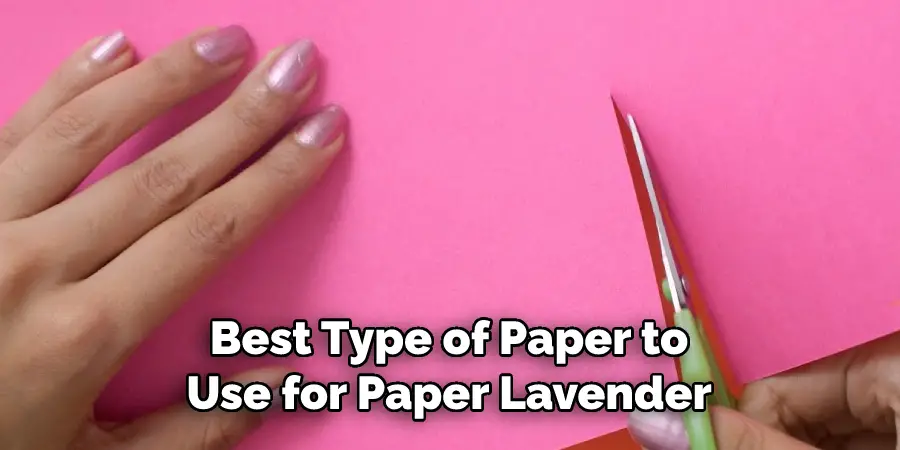
When it comes to color, you have plenty of options! Card stock is available in many shades, so you can choose one that fits your design or experiment with different colors to create something unique.
Finally, when it comes to size, card stock is usually sold in A4 sheets, which are ideal for smaller projects such as greeting cards or postcards. For bigger projects such as wall art or scrapbooks, you may want to look for larger sizes like A3 or A2, which will give you more room to work with and create something truly stunning.
By finding the right materials and experimenting with different techniques, you can make sure your paper lavender project looks and smells great for years to come.
Frequently Asked Questions:
Q: Can I Use Fresh Lavender for My Paper Project?
A: Fresh lavender is not recommended as it will take longer to press and may not retain its color or scent. Dried lavender is a better option for paper projects. You can also use artificial lavender for a longer-lasting result.
Q: How Can I Speed Up the Drying Process?
A: You can speed up the drying process by using an oven or microwave to dry out your project. Just make sure to allow it to cool before using any sealant or hairspray for extra longevity.
Q: Can I Use Regular Glue for My Paper Lavender Project?
A: It is recommended to use a craft glue that dries clear and remains flexible. This will help the petals hold their shape without becoming brittle. PVA glue or white school glue are good options.
Q: Do I Need to Use a Sealant or Hairspray on My Paper Lavender Project?
A: It is recommended to use a sealant or hairspray on top of your dried paper lavender project in order to keep it looking fresh for longer. This will also help protect the project from dust and damage over time.
Conclusion:
Crafting paper lavender doesn’t have to be a complicated and time-consuming task. In as little as fifteen minutes and with inexpensive materials, you can create colorful handmade lavender that will add both a pleasant scent and decor to your home. Even with limited crafting experience, almost anyone can successfully follow the steps outlined in this blog post. It’s essential to start out by carefully selecting quality materials and then not tearing or ripping them during preparation.
Use colorful ribbons, twines, and fabric scraps you may already own to give it an added degree of personalization. With detailed instructions like this one, creating paper lavender is an achievable goal that can leave you with a beautiful result at the end of it all. Give paper lavender crafting a try today!
Hopefully, the article on how to make paper lavender has been helpful to you. With the right materials, a little bit of creativity, and these tips, you can make something truly unique that will last for years! Have fun experimenting, and get creative with your projects! Happy crafting!

